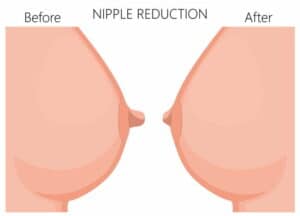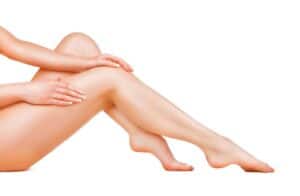Key Takeaways
-
Tumescent liposuction is a highly effective technique specifically for treating lipedema, offering targeted fat removal while minimizing bleeding and bruising.
-
Understanding the anesthesia options and associated risks is crucial; tumescent liposuction typically involves local anesthesia, reducing the risks associated with general anesthesia.
-
Comparing tumescent to water-assisted liposuction reveals that each has its unique advantages, but tumescent liposuction often provides more precision in fat removal, which is essential for lipedema patients.
-
Choosing the right technique for your lipedema treatment involves consulting with a specialized surgeon who understands the nuances of the condition and can tailor the procedure to your specific needs.
-
Educating yourself on the various aspects of tumescent liposuction, including its benefits and limitations, empowers you to make informed decisions about your health and treatment options.
-
The success of tumescent liposuction for lipedema significantly depends on the skill and experience of the surgeon, emphasizing the importance of selecting a provider with a track record of treating lipedema patients successfully.
Understanding Tumescent Liposuction
Local Anesthesia
Tumescent liposuction introduces a localized anesthetic to the treatment area. This approach significantly reduces discomfort. It also minimizes risks associated with general anesthesia. Patients experience less pain and fewer side effects.
Doctors inject a solution directly into the subcutaneous fat. This solution contains an anesthetic for numbing and a medication to constrict blood vessels. The process not only eases the removal of lipedema fat but also lessens bleeding during the procedure.
Lymphatic Preservation
Dr. Wright’s specialized technique focuses on preserving lymphatic system integrity. This careful approach reduces post-operative complications like lymphedema.
By avoiding damage to lymphatic vessels, this method supports better lymph transport post-surgery. It ensures that the debulking of fatty tissue does not harm the body’s natural lymphatic drainage capabilities.
Long-term Relief
Tumescent liposuction offers long-term relief from lipedema symptoms. Patients report significant improvements in mobility and pain reduction.
This procedure plays a crucial role in slowing disease progression by removing fatty tissue that cannot be lost through diet and exercise alone. Moreover, it helps in preventing further buildup of lymphatic fluid, offering patients a better quality of life.
Anesthesia Options and Risks
Local Anesthesia
Local anesthesia is a cornerstone in tumescent liposuction. It allows patients to remain awake, reducing the risks associated with general anesthesia. This surgical treatment uses large volumes of a diluted local anesthetic to swell and firm the fatty areas before removal.
The safety profile of local anesthesia in this context is notably high. Many patients experience minimal discomfort and can return home the same day. However, exceeding safe doses poses risks, including toxicity leading to serious complications.
General Anesthesia Risks
In contrast, general anesthesia carries higher risks. It often leads to longer recovery times and increased chances of complications such as deep vein thrombosis or pulmonary embolism. For patients with lipedema, especially those battling obesity or excess skin, these risks are significant considerations.
Surgical teams must weigh the aesthetic results against potential health impacts carefully. The choice between local and general anesthesia depends on various factors, including the extent of fat removal and individual health status.
Pre-Surgical Evaluation
A thorough pre-surgical evaluation is crucial. It ensures that the chosen method of anesthesia aligns with the patient’s health needs and surgical goals. This assessment can help prevent postoperative complications like excessive swelling or pain on the postoperative day.
Patients should discuss their symptoms, medical history, and concerns with their surgeon beforehand. This dialogue helps tailor treatment options, whether they lean towards surgical procedures or nonsurgical therapies.
Tumescent vs Water Assisted Lipo
Mechanism Differences
Tumescent liposuction involves injecting a large volume of tumescent fluid into the fatty tissue before removal. This fluid, a mixture of saline, lidocaine, and epinephrine, swells the fat, making it easier to remove.
Water-assisted liposuction (WAL), on the other hand, uses a gentle jet of water to loosen fat cells. The water spray delivers tumescent fluid, aiding in fat removal while minimizing tissue trauma.
Recovery Times
Patients often experience quicker recovery times with WAL due to its less invasive nature. The technique’s gentle approach results in less bruising and swelling compared to traditional methods.
In contrast, tumescent lipo might involve more discomfort post-procedure. However, it allows for precise sculpting of larger areas.
Patient Preferences
Choosing between these methods depends on several factors. Patients seeking treatment for smaller areas or those with health concerns may prefer WAL for its gentler approach.
Those targeting extensive fat removal might lean towards tumescent lipo for its effectiveness in sculpting. Personal health considerations and desired recovery timelines also play crucial roles in this decision.

Choosing the Right Technique for You
Expert Consultation
Consulting with experienced cosmetic surgeons is crucial. They specialize in lipedema and can recommend the most effective liposuction technique. Each patient’s condition varies, making personalized advice invaluable.
Surgeons will evaluate your medical history and the stage of your lipedema. This helps them tailor a treatment plan that suits your needs.
Personalized Plans
Your treatment should reflect your unique case. It must consider your medical background, the severity of your lipedema, and lifestyle factors. A personalized plan ensures you receive care that targets your specific concerns.
Options like tumescent liposuction or water-assisted lipo might be suggested. Each has its benefits depending on the area treated and the desired recovery time.
Informed Decisions
Being well-informed about each technique’s benefits and risks is essential. Understand how treatments like hormone therapy or lymphatic massage could complement your surgery.
Ask about potential recovery times and how therapies like physical therapy might aid in your rehabilitation. Knowing these details allows you to make decisions confidently.
Summary
Tumescent liposuction offers a beacon of hope for those battling lipedema, blending efficiency with a safety profile that stands out. You’ve explored how it works, anesthesia options, and how it stacks up against water-assisted lipo. Now, you’re better armed to make an informed choice that aligns with your health goals and personal circumstances. Remember, the right technique for you hinges on various factors, including your medical history and specific needs. It’s crucial to consult with a healthcare provider who not only understands lipedema but also has a deep knowledge of the nuances of tumescent liposuction. They can guide you through making a decision that’s not just effective but also safe.
Ready to take the next step towards managing your lipedema? Reach out to a specialist today and discuss if tumescent liposuction is the right path for you. Your journey towards relief starts with being informed and proactive about your options.
Frequently Asked Questions
What is tumescent liposuction?
Tumescent liposuction is a technique that uses a solution to swell and firm fat, making it easier to remove. It’s less invasive, reducing recovery time.
How does tumescent liposuction differ from water-assisted lipo?
Tumescent liposuction uses a special solution for fat removal, while water-assisted lipo employs a stream of water to loosen fat. Tumescent offers more precision and less bruising.
What anesthesia options are available for tumescent liposuction?
Local anesthesia is commonly used in tumescent liposuction, minimizing risks associated with general anesthesia and promoting a quicker recovery.
What are the risks of tumescent liposuction?
Risks include infection, bleeding, and uneven fat removal. However, when performed by a skilled professional, these risks are significantly reduced.
How do I know if tumescent liposuction is right for me?
Choosing the right technique depends on your health, the area being treated, and your desired outcomes. Consultation with a qualified surgeon can help determine if tumescent liposuction meets your needs.
Can tumescent liposuction treat lipedema?
Yes, tumescent liposuction is effectively used to remove fatty tissue in patients with lipedema, offering relief from discomfort and improving mobility.




